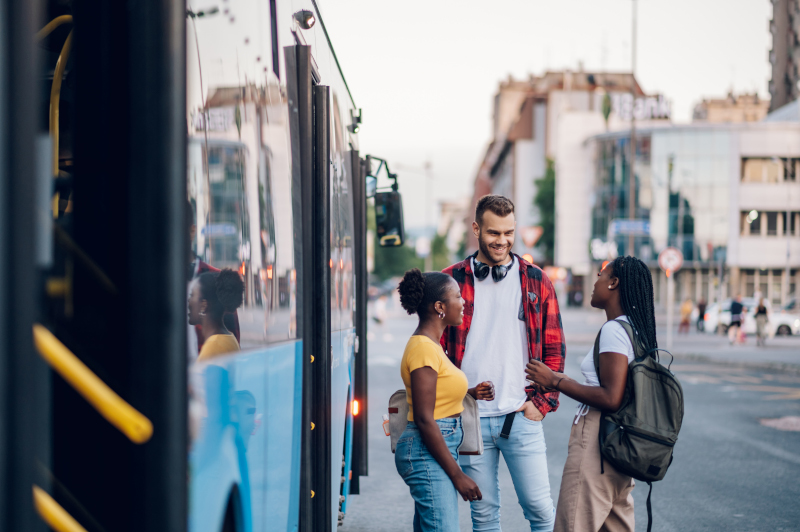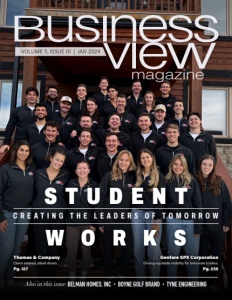Montgomery Transit
En Route to 2024 and Beyond
Keeping Montgomery moving with top-tier services
The pandemic may have put a damper on public transportation, however that was then and this is now. With public transportation passenger numbers up to pre-COVID numbers, mass transportation organizations across the country are welcoming exciting new initiatives; Montgomery Transit is no exception.
With roots that trace back to the late 18th century, Montgomery Transit is a key resource for the city of Montgomery, Alabama, and has been evolving to meet the challenges of the modern era. Owned by the city of Montgomery and operated by First Transit, the Montgomery Transit of today operates three key services: fixed route, paratransit, and the recently launched micro transit.
The fixed route service, with 14 routes and 25 buses, forms the backbone of Montgomery Transit, ensuring daily connectivity from 5:00 AM to 9:00 PM, Monday through Saturday. The paratransit service caters to the disabled community, offering reservation-based rides during similar hours.
The innovative micro-transit service, introduced in September, serves as a point-to-point, reservation-based system operating in the downtown area and the airport corridor, with plans for future expansion.
Samuel Tensley, GM and CEO of Montgomery Transit shares, “We’re using the downtown area where we have a lot of hotels, different museums and attractions. The mayor pushed for the first zone to start there, and to the airport, which has gotten great success because we get a lot of the airline employees that come in. At $1.50 per trip, you really can’t beat that, to go from the airport downtown to any hotel that you’re staying at, and vice versa.”
He notes that most rides comfortably accommodate up to nine passengers, and the majority of trips span less than ten minutes, exemplifying the service’s prompt and convenient nature.
Strategic advertising efforts target key locations, such as the airport and downtown museums and hotels, amplifying awareness about the new endeavor.
“This is only our pilot zone,” adds Tensley. “We’re in talks right now to increase this zone and we’re going to add two more other zones which will serve the community and possibly go curb to curb. So, it’s about to explode by next year.”

Embracing Sustainability and Technology
In a city steeped in history, Montgomery Transit is a testament to progress, as it seeks out future electrification opportunities, in line with the government’s mandate for zero-emission transit by 2035. “We have applied for what is called Zero Emissions Grants, which would allow us to purchase some electric buses as well as the infrastructure for an electric system,” Tensley details.
Despite not yet securing these grants, the system is gearing up for a greener future. “We’re working towards that goal to get there. But in place right now we are doing some renovations. We’re purchasing new vehicles, and we’re also looking at our water separator system and having that revamped, as well as our fueling system. We’re trying to build up and stay current on all the technology as well as the environmental issues, so we can have a safe operation,” he acknowledges.
In addition, a $1.1 million investment into the renovation of two of Montgomery Transit’s satellite facilities is currently underway, along with a new bus wash system. “We are planning on doing quite a few projects and improvements that are based on the CARES Act money that we receive from the government as well as some other grants,” says Tensley.
Reminiscing about a time when locating a bus required sharing location codes over the radio, Tensley says that Montgomery Transit is fully embracing the latest technology, creating more efficiency and simplifying the rider experience. With Moovit, passengers can effortlessly schedule bus rides akin to booking flights, while Transloc provides a real-time visual location tracking system, allowing dispatchers to track buses with precision.
Even the paratransit service has evolved from manual manifest creation to seamless computer-generated operations. “I can remember a time when I served at one location, it was done by hand. They would call in and the dispatchers would have to write down everything by hand and get it out to the drivers,” Tensley remarks. “And with micro-transit, people can use an app and book everything themselves, and it goes right to the tablets that the drivers use. So, technology has just been amazing.”
The maintenance department is also on trend, utilizing Ron Turley fleet management software to ensure buses are well-maintained. “That does a lot of our tracking and lets us know when the bus is due for preventative maintenance. It gives work order information and full reports on everything.”
Triumphing Over Challenges
While the COVID-19 pandemic led to a temporary decline in ridership, Montgomery Transit has been resilient. Tensley elaborates, “In essence, before COVID, we were doing close to 500,000 rides per year, and when COVID came in, it dropped down almost to 200,000. Now it’s picking back up. Last year we had over 400,000 and right now we’re on the way to doing another 400,000 and more.”
He admits that COVID did have an impact on the operations, adding, “We learned a lot. We learned how to be more careful with each other hygiene-wise, sterilization-wise, washing hands, and just making sure that if we feel under the weather we just stay home so that we won’t infect anyone else.”
Montgomery Transit also felt the impact of supply chain shortages which have been experienced by the transit industry across the board. In terms of new bus production, Tensley says, “It’s taking a lot longer. We had new buses that we had just brought in, and those buses sat for months waiting for some parts to come in due to the supply chain issues. Even now, small parts that we may need are caught up through the supply chain. We have to wait days, sometimes weeks, to get parts that we used to be able to get the same day or even the next day. But it’s getting better.”
As for workforce challenges, he maintains, “I can honestly say that we are pretty good on manpower. We’re probably only down 1 mechanic at this point, compared to some systems that are out there. My cohorts that I talk to, they’re hurting. We haven’t had as many problems there. For Alabama, our wages are pretty good. So, we usually recruit regularly for drivers as well as mechanics.”
Spreading the Word on the “M” Transit
As Montgomery works to raise brand awareness as the “M Transit”, they have partnered with outside marketing firm inMM Group, Christopher D. Thomas, Founder and CEO and are leveraging various channels, including social media platforms like Instagram and Facebook, for widespread exposure. Additionally, they have worked with a local magazine, and television ads to reach diverse audiences.
“When we do bring in a new service as we did with our micro-transit, I would have what is called a public service meeting to explain to them the different ways to do it,” Tensley portrays. “We get out there at different events, and we just park the vehicle or vehicles there and have handouts for them. We’re doing the best we can to get the word out. We put Flyers out on vehicles at the parking lots here downtown to explain what is going on.”

Preserving the Past and Looking to the Future
Even with its forward-thinking approach and array of technological advancements, Montgomery Transit continues to provide a live phone number, allowing individuals to connect with an operator for assistance, answers to questions, and guidance in navigating the transit system.
Montgomery Transit also prioritizes education, deploying extra buses on specific routes, ensuring accessibility for school children and college students, and offering discounted student passes for students attending Alabama State University and Auburn University’s Montgomery campus, with dedicated routes running directly through their locations.
The educational aspect is further enriched by the inclusion of historical artifacts, such as a replica of the Rosa Parks bus and the refurbished Freedom Riders Greyhound bus, showcasing the city’s important connection to the civil rights movement.
Looking ahead, Montgomery Transit has ambitious plans on its horizon. Tensley highlights his goals, which include a fleet replacement, bolstering ridership, route adjustments as well adding more buses to routes to decrease the frequency of bus wait time on routes and expanding the success of the micro-transit service to new zones. He also hopes to strengthen community engagement, refurbish facilities, and raise brand awareness as the M. Transit.
As a final thought he emphasizes, “I just want to keep getting the M. Transit out there to the people, to let them know that we’re here, we’re new and we’re going to be growing.”
AT A GLANCE
Montgomery Transit
What: An innovative city-owned transit system
Where: Montgomery, Alabama
Website: www.themtransit.com
PREFERRED VENDORS
Genfare – Genfare.com
Three Reasons for Your Transit Agency to Adopt Open Payments
We know transit riders like the simplicity of open payments . They don’t have to figure out fare structures, know where to buy a ticket, download an app, or make sure they have cash on hand. They just tap-and-go using whatever payment method they have in their pocket.
As many benefits as open payments provide to riders, they present an even bigger opportunity for transit agencies to streamline their operations, reduce costs, and increase ridership and revenue. Three big things happen when open payment is introduced: the cost of cash collection decreases, dwell time reduces, and interoperability increases.
Decreasing Cash Collection
Collecting cash is expensive and time consuming. As an ardent supporter of equitable mobility, Genfare does not recommend eliminating cash fares, but reducing the amount of cash collected by adopting open payment which has many operational benefits to the transit agency:
- Reduced maintenance of hardware: Less cash coming in means lower maintenance and parts replacement costs.
- Fewer trips through the vault lane: Fareboxes can be probed and emptied less frequently.
- Better security: Every cent is accounted for, and no human errors can occur. Encryption and tokenization methods are extremely secure.
- Faster access to revenue: Payments are processed and available the same day unlike cash that takes a couple days before it is processed and banked.
- Less staffing pressure: The less money there is to count and move, the fewer people agencies need to staff the counting rooms.
Reduced Dwell Time
Statistics on dwell time suggest that approximately half the time a bus is in service is spent on boarding. Open payment is tap-and-go, allowing riders to board faster and cut back on driver interaction with passengers. Reducing dwell time has the effect of shortening the amount of time it takes a bus to complete its route, making the bus a more attractive choice for riders who have other options. The overall impact is increased ridership and revenue.
Greater Interoperability
Open payments and the software that supports them simplify the connection of adjacent transit agencies, bike and scooter share, parking, and other modalities that move riders along their journeys. When riders can easily pay for first-mile/last-mile modalities or transfer from an urban to a suburban bus or regional commuter rail without needing a ticket for each, the providers can coordinate discounts, incentives, and trip planning. And that translates to increased ridership and while not adding the administrative burden of shared fare media.
On the ad we use “open payment” as a singular word… should we be consistent with this one?




